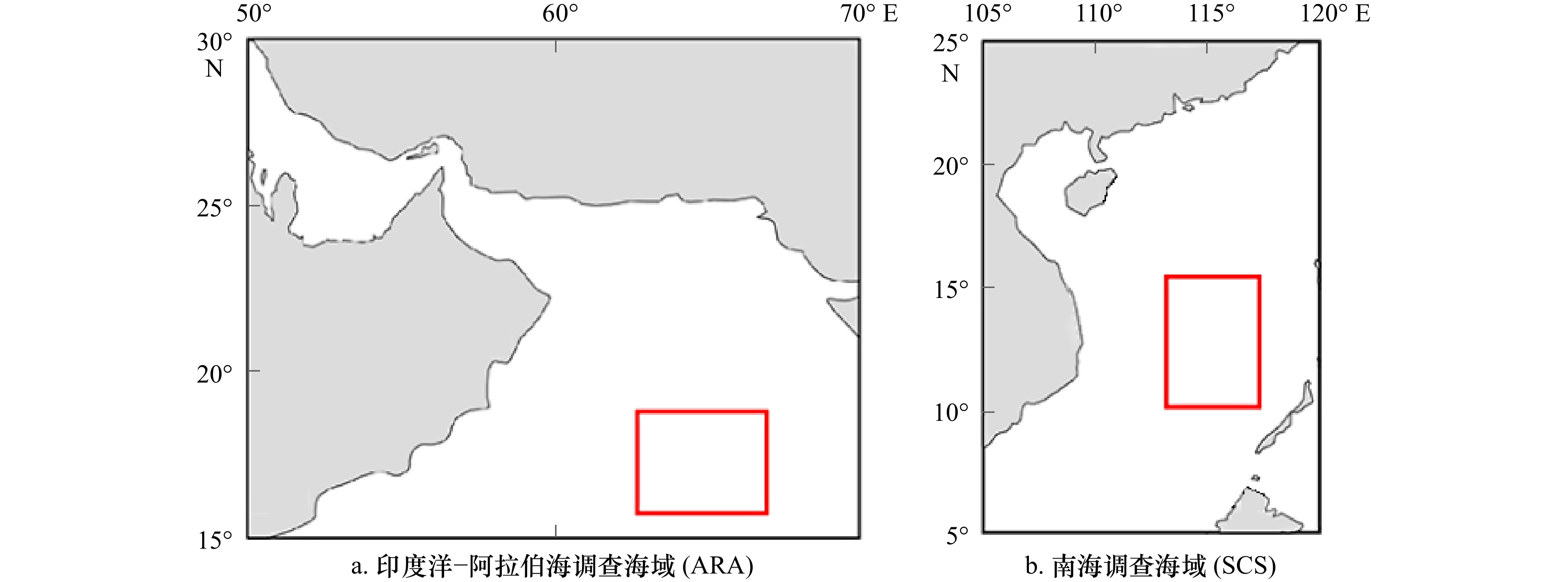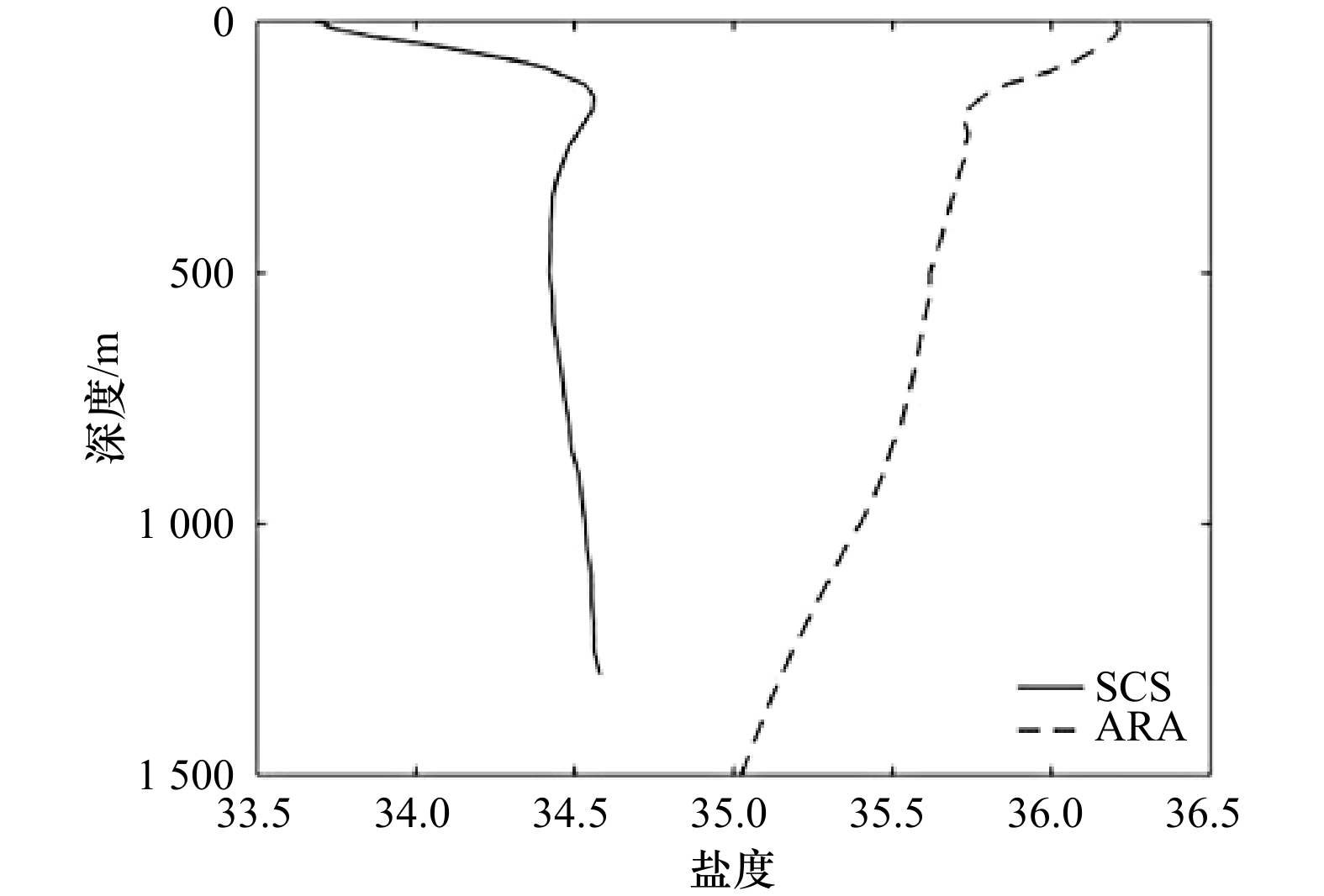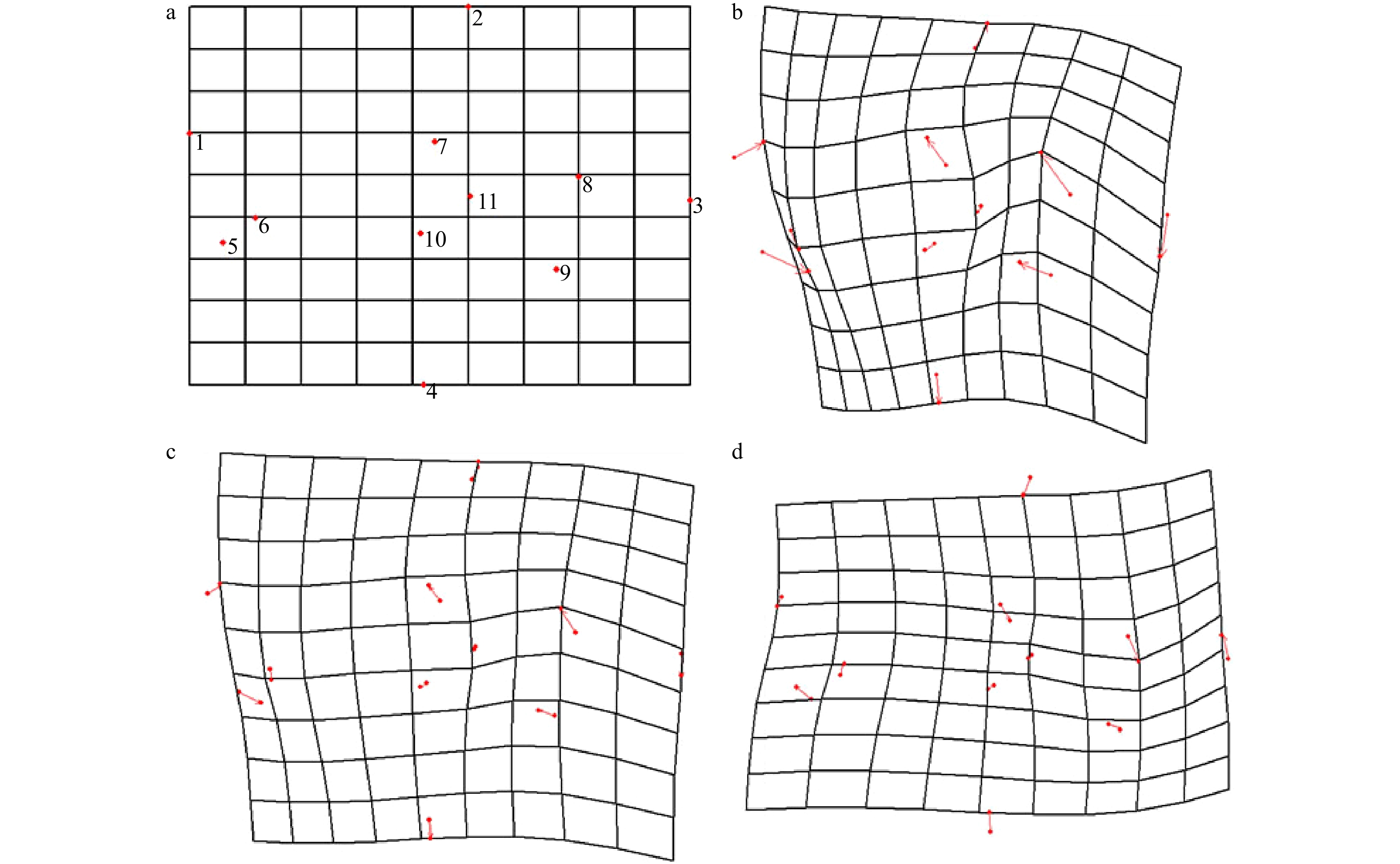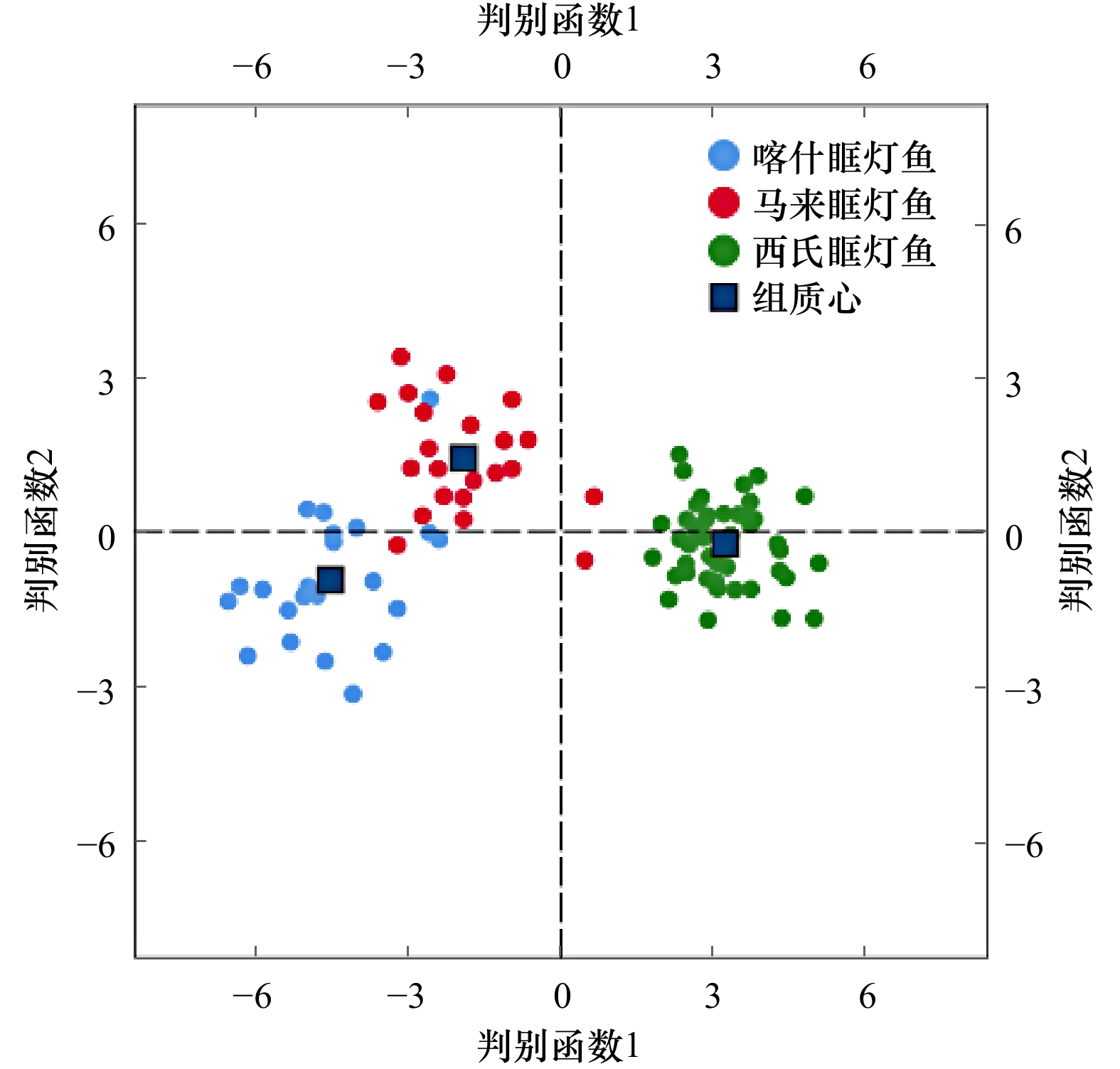Interspecies differences in the otolith morphology of three Diaphus species based on landmark method
-
摘要: 眶灯鱼属(Diaphus)是灯笼鱼科中物种丰度最高,种群数量最丰富的属之一,也是大洋中深层鱼类中的优势类群,但由于外部形态的高度相似,目前对眶灯鱼属的种类鉴定存在较多困难。为探究耳石地标点形态分析法(简称地标点法)在识别耳石形态相似、分布海域有较大重叠的眶灯鱼种间矢耳石差异的可行性,本文采集了分布于印度洋的西氏眶灯鱼(Diaphus thiollierei)和分布于南海的喀什眶灯鱼(D. garmani)和马来眶灯鱼(D. malayanus)的耳石应用地标点法进行形态分析。分析结果显示,3种眶灯鱼的矢耳石形态差异主要集中于内部听沟,内部标点贡献率达62%。网格差异可视化表明,西氏眶灯鱼矢耳石翼叶长度长于其他两种,而宽度则略窄。利用贝叶斯函数进行分类判别,结果表明西氏眶灯鱼判别成功率达到100%,而其余两种眶灯鱼则存在少量误判。此外,本研究结合样本栖息环境差异及相互间的亲缘关系,发现造成3种眶灯鱼矢耳石听沟形态差异的主要原因可能来源于所栖息海域的巨大盐度差异,但盐度影响矢耳石听沟形态的内在生理机制还需进一步研究。Abstract: Diaphus is one of the genera with the highest species abundance and the most abundant population in the family Myctophidae, and it is also the dominant group of deep sea fishes in the ocean. However, due to the high similarity of external morphology, it is difficult to identify the lanternfish species. In order to explore the feasibility of otoliths morphological analysis in identifying the otolith differences between Diaphus species with similar otoliths and large overlapping distribution areas, the otoliths of three Diaphus species were collected from the Indian Ocean and the South China Sea for morphometrics analysis with landmark method. The results showed that the morphological variation of sagittal otoliths in three lanternfishes were mainly in the internal main sulcus, and the internal punctuation contribution rate reached 62%. The grid difference visualization showed that the wing length of sagittal otoliths in D. thiollierei was longer than that of the other two species, while the width was slightly narrower. The Bayes function was used for classification and discrimination, and the results showed that the success rate of D. thiollierei was 100%, while the other two species had a few misjudgments. In addition, taking into account the habitat environment and the genetic relationship between these three species, we supposed that the main reason for the morphological differences in the main sulcus of the three spescies was the huge salinity difference in the habitat sea area. However, the impact and physiological mechanism of salinity on the morphology of the main sulcus of sagittal otoliths needs to be further studied.
-
Key words:
- Diaphus /
- landmarks method /
- otolith morphology
-
表 1 不同地标点贡献率
Tab. 1 Contribution rate of different landmarks
地标点 贡献率/% 1 0.5 2 0.5 3 0.6 4 0.7 5 14.1 6 21.8 7 10.2 8 5.1 9 2.9 10 13.1 11 30.5 表 2 3种眶灯鱼矢耳石形态判别分析及交互验证结果
Tab. 2 Discriminate analysis and cross-validation of three Diaphus species
项目 原先种类 预判种类 喀什眶灯鱼 马来眶灯鱼 西氏眶灯鱼 逐步验证结果 喀什眶灯鱼 19(86.36%) 3(13.64%) 0 马来眶灯鱼 1(4.55%) 19(86.36%) 2(9.09%) 西氏眶灯鱼 0 0 (44)100% 交互验证结果 喀什眶灯鱼 18(81.82%) 4(18.18%) 0 马来眶灯鱼 2(9.09%) 18(81.82%) 2(9.09%) 西氏眶灯鱼 0 1(2.27%) 43(97.73%) -
[1] Sebastine M, Bineesh K K, Abdussamad E M, et al. Myctophid fishery along the Kerala coast with emphasis on population characteristics and biology of the headlight fish, Diaphus watasei Jordan & Starks, 1904[J]. Indian Journal of Fisheries, 2013, 60(4): 7−11. [2] Chen Lishu, Yan H Y. The relative distribution of otoliths as a means of larval fish identification[J]. Zoological Studies, 2002, 41(2): 144−152. [3] 赵博. 矢耳石形态分析方法及其在石首科鱼类群体判别中应用[D]. 青岛: 中国科学院大学, 2017.Zhao Bo. Otolith morphology analysis and its application in stock discrimination of sciaenidae fisher[D]. Qingdao: University of Chinese Academy of Sciences, 2017. [4] Tuset V M, Rosin P L, Lombarte A. Sagittal otolith shape used in the identification of fishes of the genus Serranus[J]. Fisheries Research, 2006, 81(2/3): 316−325. [5] Tuset V M, Lombarte A, Assis C A. Otolith atlas for the western Mediterranean, north and central Eastern Atlantic[J]. Scientia Marina, 2008, 72(S1): 7−198. [6] Tuset V M, Farré M, Otero-Ferrer J L, et al. Testing otolith morphology for measuring marine fish biodiversity[J]. Marine and Freshwater Research, 2016, 67(7): 1037−1048. doi: 10.1071/MF15052 [7] Campana S E. Chemistry and composition of fish otoliths: pathways, mechanisms and applications[J]. Marine Ecology Progress Series, 1999, 188: 263−297. doi: 10.3354/meps188263 [8] Battaglia P, Malara D, Ammendolia G, et al. Relationships between otolith size and fish length in some mesopelagic teleosts (Myctophidae, Paralepididae, Phosichthyidae and Stomiidae)[J]. Journal of Fish Biology, 2015, 87(3): 774−782. doi: 10.1111/jfb.12744 [9] 欧利国, 刘必林. 基于地标点法的4种鲹科鱼类矢耳石形态分类[J]. 大连海洋大学学报, 2020, 35(1): 114−120. doi: 10.16535/j.cnki.dlhyxb.2019-171Ou Liguo, Liu Bilin. Identification of sagittal otolith shapes of four species in family Carangidae based on landmark morphometrics analysis[J]. Journal of Dalian Ocean University, 2020, 35(1): 114−120. doi: 10.16535/j.cnki.dlhyxb.2019-171 [10] Fortunato R C, Durà V B, Volpedo A. The morphology of saccular otoliths as a tool to identify different mugilid species from the northeastern Atlantic and Mediterranean Sea[J]. Estuarine Coastal and Shelf Science, 2014, 146: 95−101. doi: 10.1016/j.ecss.2014.05.013 [11] Gaga J F. Morphology of the saccular otoliths of six species of Lanternfishes of the Genus Symbolophorus (Pisces: Myctophidae)[J]. Bulletin of Marine Science, 1993, 52(3): 949−960. [12] Campana S E, Casselman J M. Stock discrimination using otolith shape analysis[J]. Canadian Journal of Fisheries and Aquatic Sciences, 1993, 50(5): 1062−1083. doi: 10.1139/f93-123 [13] Reichenbacher B, Feulner G R, Schulz-Mirbach T. Geographic variation in otolith morphology among freshwater populations of Aphanius dispar (Teleostei, Cyprinodontiformes) from the southeastern Arabian Peninsula[J]. Journal of Morphology, 2009, 270(4): 469−484. doi: 10.1002/jmor.10702 [14] Friedland K D, Reddin D G. Use of otolith morphology in stock discriminations of Atlantic Salmon (Salmo salar)[J]. Canadian Journal of Fisheries and Aquatic Sciences, 1994, 51(1): 91−98. doi: 10.1139/f94-011 [15] 林东明, 许柳雄, 叶旭昌, 等. 西北印度洋丝尾红钻鱼耳石生长形态学的初步研究[J]. 大连海洋大学学报, 2015, 30(2): 155−160.Lin Dongming, Xu Liuxiong, Ye Xuchang, et al. Otolith morphology of ruby snapper Etelis coruscans in the northwestern Indian Ocean[J]. Journal of Dalian Ocean University, 2015, 30(2): 155−160. [16] 欧利国, 刘必林. 南海东沙群岛海域圆鲹属鱼类矢耳石的形态特征分析[J]. 南方水产科学, 2019, 15(3): 33−40.Ou Liguo, Liu Bilin. Sagittae morphology of genus Decapterus from Dongsha Islands in South China Sea[J]. South China Fisheries Science, 2019, 15(3): 33−40. [17] James Rohlf F, Slice D. Extensions of the procrustes method for the optimal superimposition of Landmarks[J]. Systematic Biology, 1990, 39(1): 40−59. [18] 郑朝臣, 姜涛, 骆仁军, 等. 不同产地中华绒螯蟹形态差异的地标点法分析[J]. 水产学报, 2017, 41(12): 1896−1907.Zheng Chaochen, Jiang Tao, Luo Renjun, et al. Landmark-based morphometric identification of different geographical origins for the Chinese mitten crab (Eriocheir sinensis)[J]. Journal of Fisheries of China, 2017, 41(12): 1896−1907. [19] Mondal R, Devi N P, Jauhari R K. Landmark-based geometric morphometric analysis of wing shape among certain species of Aedes mosquitoes in District Dehradun (Uttarakhand), India[J]. Journal of Vector Borne Diseases, 2015, 52(2): 122−128. [20] Sassa C, Kawaguchi K, Loeb V J. Early development of Diaphus garmani (Myctophidae) in the transition region of the western North Pacific[J]. Ichthyological Research, 2003, 50(1): 94−97. doi: 10.1007/s102280300015 [21] Ohshimo S, Yasuda T, Tanaka H, et al. Biomass fluctuation of two dominant lanternfish Diaphus garmani and D. chrysorhynchus with environmental changes in the East China Sea[J]. Fisheries Science, 2012, 78(1): 33−39. doi: 10.1007/s12562-011-0424-x [22] Cadrin S X. Advances in morphometric identification of fishery stocks[J]. Reviews in Fish Biology and Fisheries, 2000, 10(1): 91−112. doi: 10.1023/A:1008939104413 [23] 张波, 戴芳群, 金显仕. 黄海重要饵料鱼种矢耳石的形态特征[J]. 中国水产科学, 2008, 15(6): 917−926.Zhang Bo, Dai Fangqun, Jin Xianshi. Morphologic characters of sagittae in some important prey fish in the Yellow Sea[J]. Journal of Fishery Sciences of China, 2008, 15(6): 917−926. [24] 王英俊. 傅里叶分析在鱼类耳石形态学中的应用研究[D]. 青岛: 中国海洋大学, 2010.Wang Yingjun. The application of fourier analysis in the research of otolith morphology[D]. Qingdao: Ocean University of China, 2010. [25] 姜涛. 基于耳石形态和微化学特征的我国鲚属鱼类洄游生态学研究[D]. 南京: 南京农业大学, 2014.Jiang Tao. Study on migratory ecology of Coilia fish in Chinese waters inferred from otolith morphometric and microchemical characteristics[D]. Nanjing: Nanjing Agricultural University, 2014. [26] 姜涛, 杨健, 刘洪波, 等. 刀鲚、凤鲚和湖鲚矢耳石的形态学比较研究[J]. 海洋科学, 2011, 35(3): 23−31.Jiang Tao, Yang Jian, Liu Hongbo, et al. A comparative study of the morphology of sagittal otolith in Coilia nasus, Coilia mystus and Coilia nasus taihuensis[J]. Marine Sciences, 2011, 35(3): 23−31. [27] 姜涛, 郑朝臣, 黄洪辉, 等. 基于地标点法的九龙江口和珠江口凤鲚和七丝鲚耳石形态学特征比较[J]. 南方水产科学, 2018, 14(6): 10−16.Jiang Tao, Zheng Chaochen, Huang Honghui, et al. Landmark-based morphometric comparison of otolith for Coilia mystus and C. grayii from Pearl River Estuary and Jiulong River Estuary[J]. South China Fisheries Science, 2018, 14(6): 10−16. [28] 张申增, 麦广铭, 陈志劼, 等. 红鳍笛鲷和紫红笛鲷种类和群体的矢耳石地标点法识别[J]. 广东海洋大学学报, 2020, 40(2): 35−43.Zhang Shenzeng, Mai Guangming, Chen Zhijie, et al. Performance of otolith landmarks on identifying fish species and stocks for two cultured Lutjanus spp.[J]. Journal of Guangdong Ocean University, 2020, 40(2): 35−43. [29] 侯刚, 刘丹丹, 冯波, 等. 基于地标点几何形态测量法识别北部湾4种白姑鱼矢耳石形态[J]. 中国水产科学, 2013, 20(6): 1293−1302. doi: 10.3724/SP.J.1118.2013.01293Hou Gang, Liu Dandan, Feng Bo, et al. Using landmark-based geometric morphometrics analysis to identify sagittal otolith of four Pennahia fish species[J]. Journal of Fishery Sciences of China, 2013, 20(6): 1293−1302. doi: 10.3724/SP.J.1118.2013.01293 [30] 侯刚, 王学锋, 朱立新, 等. 基于几何形态测量学的4种金线鱼矢耳石识别研究[J]. 海洋与湖沼, 2014, 45(3): 58−65, 496.Hou Gang, Wang Xuefeng, Zhu Lixin, et al. Geometric Morphometrics of sagittal otolith of four Nemipterus fish species[J]. Oceanologia et Limnologia Sinica, 2014, 45(3): 58−65, 496. [31] Longmore C, Fogarty K, Neat F, et al. A comparison of otolith microchemistry and otolith shape analysis for the study of spatial variation in a deep-sea teleost, Coryphaenoides rupestris[J]. Environmental Biology of Fishes, 2010, 89(3/4): 591−605. [32] 朱元鼎. 中国石首鱼类分类系统的研究和新属新种的叙述[M]. 上海: 上海科学技术出版社, 1963.Zhu Yuanding. Study on the Taxonomic System of Chinese Croakers and Description of New Genera and Species[M]. Shanghai: Shanghai Science and Technology Press, 1963. [33] 成庆泰, 郑葆珊. 中国鱼类系统检索. 上册[M]. 北京: 科学出版社, 1987.Cheng Qingtai, Zheng Baoshan. Systematic Research of Chinese Fishes. Volume 1[M]. Beijing: Science Press, 1987. [34] Tuset V M, Lombarte A, González J A, et al. Comparative morphology of the sagittal otolith in Serranus spp.[J]. Journal of Fish Biology, 2003, 63(6): 1491−1504. doi: 10.1111/j.1095-8649.2003.00262.x [35] Bobiles R U, Soliman V S, Yamaoka K. Changes in otolith structure of seagrass siganid Siganus canaliculatus during settlement[J]. AACL Bioflux, 2015, 8(1): 15−25. [36] Monteiro L R, Di Beneditto A P M, Guillermo L H, et al. Allometric changes and shape differentiation of sagitta otoliths in sciaenid fishes[J]. Fisheries Research, 2005, 74(1/3): 288−299. [37] Reichenbacher B, Sienknecht U, Küchenhoff H, et al. Combined otolith morphology and morphometry for assessing taxonomy and diversity in fossil and extant killifish (Aphanius, dagger Prolebias)[J]. Journal of Morphology, 2007, 268(10): 898−915. doi: 10.1002/jmor.10561 [38] 潘晓哲, 高天翔. 基于耳石形态的鱚属鱼类鉴别[J]. 动物分类学报, 2010, 35(4): 799−805.Pan Xiaozhe, Gao Tianxiang. Sagital otolith shape used in the discrimination of fishes of the genus Sillago in China[J]. Acta Zootaxologica Sinica, 2010, 35(4): 799−805. [39] 侯刚, 冯波, 颜云榕, 等. 北部湾金线鱼、深水金线鱼与日本金线鱼矢耳石形态识别的初步研究[J]. 中国海洋大学学报, 2012, 42(3): 27−35. doi: 10.16441/j.cnki.hdxb.2012.03.004Hou Gang, Feng Bo, Yan Yunrong, et al. The study on using otolith morphology to identify three Nemipterus fish species: Nemipterus virgatus, N. Bathybius and N. Japonicus in Beibu Gulf[J]. Periodical of Ocean University of China, 2012, 42(3): 27−35. doi: 10.16441/j.cnki.hdxb.2012.03.004 [40] 郭弘艺, 唐文乔, 魏凯, 等. 中国鲚属鱼类的矢耳石形态特征[J]. 动物学杂志, 2007, 42(1): 39−47. doi: 10.3969/j.issn.0250-3263.2007.01.006Guo Hongyi, Tang Wenqiao, Wei Kai, et al. Morphologic characters of the sagittal otoliths of the fishes of the Genus Coilia from China[J]. Chinese Journal of Zoology, 2007, 42(1): 39−47. doi: 10.3969/j.issn.0250-3263.2007.01.006 [41] 叶振江, 孟晓梦, 高天翔, 等. 两种花鲈(Lateolabrax sp. )耳石形态的地理变异[J]. 海洋与湖沼, 2007, 38(4): 356−360.Ye Zhenjiang, Meng Xiaomeng, Gao Tianxiang, et al. The geographical differentiation in otolith morphology of sea bass: Lateolabrax japonicus and L. Maculates[J]. Oceanologia et Limnologia Sinica, 2007, 38(4): 356−360. [42] Sassa C, Kawaguchi K. Larval feeding habits of Diaphus garmani and Myctophum asperum (Pisces: Myctophidae) in the transition region of the western North Pacific[J]. Marine Ecology Progress Series, 2004, 278: 279−290. doi: 10.3354/meps278279 [43] 李励年, 朱文钊, 缪圣赐. 灯笼鱼资源的开发与利用[J]. 渔业信息与战略, 2012, 27(3): 240−245. doi: 10.13233/j.cnki.fishis.2012.03.010Li Linian, Zhu Wenzhao, Miu Shengci. Development and utilization of lantern fish resources[J]. Fishery Information & Strategy, 2012, 27(3): 240−245. doi: 10.13233/j.cnki.fishis.2012.03.010 -





 下载:
下载:





